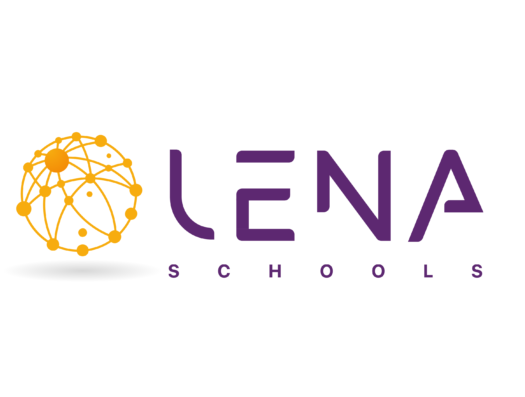ELECTIVES
Making a decision is a crucial procedure. We hope that the student and the parent both agree on the elective. Making four decisions at the seventh and eighth grade levels is crucial since the electives on the list could be canceled if there aren’t enough sign-ups. The student may be given any two of these electives, not just their top two selections.
The nature of the course, the student’s interests, and their prior experiences are a few elements to take into account. These electives include a multitude of hands-on learning opportunities. Numerous music electives can improve musical ability and pave the way for high school music participation.
Students may enroll in the second level of the same language in high school if they successfully complete two years of foreign language study in the middle grades.
Web Development I
Lena Schools presents this progressive HTML5 and CSS3 combination course as yet another blended training session combining two of the most well-liked and quickly developing technologies. The next big thing in web development is HTML5 and CSS3. Due to a number of new properties and elements that are suitable for usage in contemporary websites, HTML5 has become a key markup language on the internet.
Course Objectives:
Learn the structure and markup of HTML.
Explore new HTML5 form features.
Learn to employ best practices.
Work with CSS3 and build HTML5 applications.
Learn the components and create styles using CSS3.
Understand how to design page layouts and employ positioning with CSS3.
Use best practices in CSS3 when using display commands such as web fonts, transforms and selectors.
Web Development II
JavaScript is a programming language that gives your website life. This occurs in video games, in the way that buttons react or how data is entered on forms, in dynamic styling, in animation, etc. You can learn more about JavaScript in this post and expand your knowledge of what is possible.
JavaScript is a potent programming language that can increase a website’s interactivity. Brendan Eich is the one who created it.
JavaScript is adaptable and user-friendly for newcomers. You’ll be able to develop games, animated 2D and 3D visuals, thorough database-driven apps, and much more as you gain experience.
Although relatively small in size, JavaScript is quite flexible. On top of the fundamental JavaScript language, programmers have created a range of tools, enabling a large amount of capability with little effort.
Web Development III
React is a JavaScript library used to create front-end apps and user interfaces.
To make your code simple to read and maintain, it enables you to design reusable components. React may be used to create static websites and one-page applications when combined with a tool like Webpack.
React is declarative, which is another crucial point to make. This means that it describes what should be presented on the screen in a more natural way. This makes debugging your code simpler. React’s component-based architecture also makes it easier to handle and reuse small, independent portions in other applications.
College and Career Preparation I
Students get a deeper understanding of what it means to be college-ready in College and Career Preparation I. Students are educated on how to prepare for college exams as well as the significance of high school success in college admissions. They have extensive exposure to the financial resources that make college feasible and are aware of the kinds of colleges and degrees they may decide to pursue after high school.
Principles of Business, Marketing and Finance
Students can learn the knowledge and skills necessary for jobs in business and marketing in Principles of Business, Marketing, and Finance. Students gain an awareness of the market, as well as product placement and promotion, and start investigating the roles and responsibilities that business and marketing play in a global society.
Principles of Health Science
Students can learn the knowledge and abilities necessary for employment in healthcare through Principles of Health Science. The health care system’s services, organization, and professions are examined by students, who also receive advice on choosing a particular career path in the field of health services, such as careers in emergency medicine, nutrition, and alternative medicine.
Principles of Information Technology
Students who take Principles of Information Technology are better equipped to succeed at work. Students seek to build a grasp of professional communications and leadership skills after first becoming aware of the roles crucial to an organization’s success. Students become more adept at using word processing, email, and presentation management programs as a result. Through the fundamental study of computer hardware, operating systems, networking, the Internet, online publishing, spreadsheets, and database applications, students will also be able to demonstrate their digital literacy.
Reading Skills and Strategies (Semester Course)
A semester system divides the academic year into two sessions: fall and spring. Each session is approximately 15 weeks long, with a winter break between the fall and spring sessions and a summer break after the spring session.
The main content strands of the course—reading comprehension, vocabulary development, study skills, and media literacy—are designed to help the struggling reader achieve mastery in these areas. The course helps the student develop the abilities required for success in the academic setting and beyond using three strands. The reading comprehension strand aims to familiarize students with the various goals of reading (such as amusement, information, task completion, or analysis). The student learns particular techniques for comprehending and remembering new words in the vocabulary strand.
Writing Skills and Strategies (Semester Course)
A semester system divides the academic year into two sessions: fall and spring. Each session is approximately 15 weeks long, with a winter break between the fall and spring sessions and a summer break after the spring session.
Through a semester of interactive instruction and supervised practice in composition principles, Writing Abilities and Strategies helps students build the critical language arts abilities required for high school graduation and success on high-stakes tests. Ten small study modules make up the course.
The first two lessons introduce students to the writing process and to the elements of sentences and paragraphs through a series of low-stress, high-interest hook activities. This is done in the hopes of fostering early success and confidence. Students review, write, practice, and turn in one piece of writing during successive units. The four main learning strands of composition practice, grammar skill development, diction and style awareness, and media and technology inquiry are all integrated throughout the course. Guided studies offer an emphasis on the fundamental elements of writing that are used in school, in daily life, and at work. These modes of practice are scaffolded to suit students with varying levels of skill.

